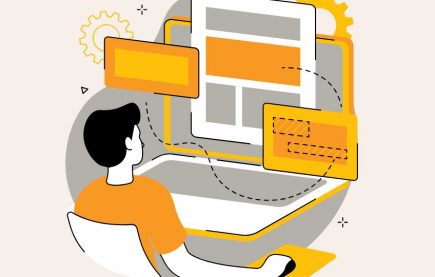
Planning for Revenue Growth in Competitive Markets

Image source: Unsplash
No matter the type of industry you’re in, revenue growth is the lifeblood of any business, especially in challenging economic times such as the ones we live in now.
Apart from shifting market conditions, the B2B sector is also full of fierce competition. That’s why it’s never too early for B2B companies to strategically plan for successful revenue growth.
Despite the challenging circumstances that B2B businesses find themselves in, a 2022 report points out that the sector will continue to be profitable. A significant growth rate in the global B2B market is expected between 2024 and 2031, reaching multimillion USD by 2029.
So what do B2B companies need to focus on the most to effectively plan for a steady growth in their revenue this year? Read on for some key strategies for driving revenue growth in competitive B2B markets!
Have a Customer-Centric Approach

Image source: Unsplash
Last year, Forrester reported that decision-makers in B2B companies who are “customer-obsessed” anticipate a growth rate of 10% or more in revenue, profits, and overall customer retention. This rate is three times higher than that estimated by their non-customer-obsessed counterparts.
The basic takeaway from this is that a customer-centric approach positively affects revenue. How do B2B companies adopt this approach? It mostly comes down to tailoring services to enhance customer satisfaction and, subsequently, customer retention.
A good example of a company that does customer retention well is Wells Fargo, which caters to numerous small businesses among its B2B customers. The bank offers various training resources covering topics from marketing to payroll to help small businesses grow, which provides added value in the form of business development.
Additionally, Wells Fargo offers streamlined solutions that easily integrate with other programs, such as the QuickBooks accounting software. This allows small businesses to manage all their banking needs conveniently in one place with accessible online and mobile options.
Effectively Grow Your Customer Base

Image source: Unsplash
We’ve made it a point to start this article off by emphasizing the importance of customer satisfaction and customer retention. However, while nurturing your existing customer base is essential, the ability to acquire new customers and build strong customer relationships right off the bat is a sign of long-term sustainable growth.
For the B2B market, effective targeting is everything. That’s why having a solid market and customer segmentation model in place should be a major focus for your marketing and sales team.
B2B companies should also think about distinguishing themselves from their competition through added value services. This can be as simple as offering a discount for premium features for new clients, but you should also think about ways of personalizing your services to make the best possible offer to new customers.
For example, IBM provides each new client with a dedicated team of experts to assist in easily integrating IBM Cloud Storage into their operations. They don’t leave onboarding up to chance; instead, IBM offers personalized training on the most suitable applications for their business.
The above approach helps IBM’s new clients quickly gain a better understanding of the product they’re paying for, thus increasing both satisfaction and engagement.
Be Innovative With Product Development

Image source: Unsplash
Innovation and sustained revenue growth go hand in hand in the B2B sector. Companies that actively embrace innovation stay relevant and improve their profitability in an ever-changing market.
No matter which industry you primarily operate in, your clients’ needs will continually evolve. In this regard, innovative product development allows B2B companies to stay in demand by addressing changing requirements and industry trends.
If your market is particularly crowded (as would be the case with, for example, e-commerce platform hosting), product and service innovation serves as a major differentiator. B2B companies that strive to introduce unique, cutting-edge solutions are those that can distinguish themselves from competitors.
A well-known example of a company that thrives on staying innovative is Apple. While normally associated with consumer products, Apple’s success does also extend to its B2B offerings, particularly when it comes to technology and enterprise solutions:
- Ecosystem integration—Apple integrates its products into its own seamless ecosystem, enhancing efficiency and productivity for companies across various devices (including Macs, iPhones, iPads, and software like iOS and macOS).
- User-centric design—the company places a strong emphasis on creating products that are not only technologically advanced but also intuitive to use. This focus on B2B UX remains appealing to thousands of businesses around the world that need solutions requiring minimal training.
- Constant iteration—Apple’s commitment to innovation is evident in its regular product releases and updates. New hardware, new software features, new services—Apple consistently iterates on its product lineup to meet the evolving needs of businesses.
Track Your Sales Activity

Image source: Unsplash
Ross Graber, Forrester’s VP and principal analyst, points out that marketing typically relies on digital touchpoints using online marketing tools and platforms. However, actual sales interactions often occur in person and escape the immediate notice of these systems.
To bridge this gap, many B2B companies burden their sales teams with the tedious task of manual data entry, hoping to capture these important interactions with customers. However, a more efficient and intelligent approach lies in the integration of AI solutions.
B2B companies can significantly benefit from deploying AI solutions that can interpret information from various sources through natural language processing, such as calendar appointments, email exchanges, and recorded conversations.
The above approach automatically integrates important seller interaction data into your business systems, relieving sellers from extensive data entry and allowing them to concentrate on their core tasks.
Therefore, investing in AI-driven sales activity tracking not only streamlines operational efficiency but also unlocks major insights about your buyers. These insights, derived from the analysis of various interactions, can be what makes or breaks the overall buyer experience. It can also contribute to optimizing campaign performance and ultimately boost conversion rates.
Furthermore, you can leverage simple assets such as a sales battlecard template to analyze the strengths and weaknesses of your competitors and help your sales team stay ahead of the game.
Stay on Top of Digital Trends
Image source: Unsplash
B2B buying journeys are now predominantly online and self-service, with more and more prospects seeking information through digital channels like chat and FAQ. Offering flexibility enables B2B businesses to engage with their accounts according to their preferences, reducing dependence on account reps.
As more companies adopt advanced technologies like generative AI and machine learning, those that aren’t keeping up will lag behind competitors. A study by Deloitte revealed that companies with high digital maturity are three times more likely to experience margin and revenue growth significantly above their industry average compared to less digitally mature counterparts.
What kinds of digital tech should B2B companies keep an eye on? Here are three major ones, with some interesting statistics to take into account:
- Artificial intelligence (AI). We’ve said it before and we’ll say it again: AI will continue to be instrumental in the growth schemes of B2B companies. Another Deloitte report from 2022 found that aligning investments in AI technology and talent is crucial for achieving early value. Many companies (65% of them) find this balance by opting to purchase AI as a product or service rather than developing it in-house. This approach provides the necessary talent and technology, allowing these companies to train their workforce and advance their technological capabilities.
- Augmented reality (AR). In a study reported by Adobe, 38% of B2B buyers mentioned that AR would speed up the buying cycle. AR not only enables the virtual display of products during meetings but also allows buyers to actively engage with them. When buyers can see and interact with the features and benefits of a tool, it reduces their uncertainties about its advantages for their businesses. This increased interaction accelerates the sales cycle, empowering buyers to make more confident decisions and reach a consensus faster.
- Predictive analytics. Sales forecasting is an important aspect of financial planning for any business, no matter the industry. Predictive analytics makes this process much easier through the quick and easy analysis of huge data sets. Embracing something as straightforward as a revenue growth calculator could help your B2B business do better forecasting and financial projecting by taking into account different metrics and the KPIs you’ve set out for your business, and then giving you a concrete number of leads that you would need to acquire to achieve them.
Final Thoughts

Image source: Unsplash
As we’ve seen here, revenue growth for B2B companies will demand strategic foresight and innovative approaches.
It can be said that success in the B2B sector will orbit around a customer-centric approach. The influence of customer obsession on revenue growth is substantial, and driving that growth in a sustainable way requires dual focus on existing and prospective customers.
However, the resounding theme here is adaptability, as companies must not only meet current customer demands but also embrace the digital trends shaping the future.
We hope this article has given you enough food for thought when it comes to planning for revenue growth in today’s competitive B2B markets.



